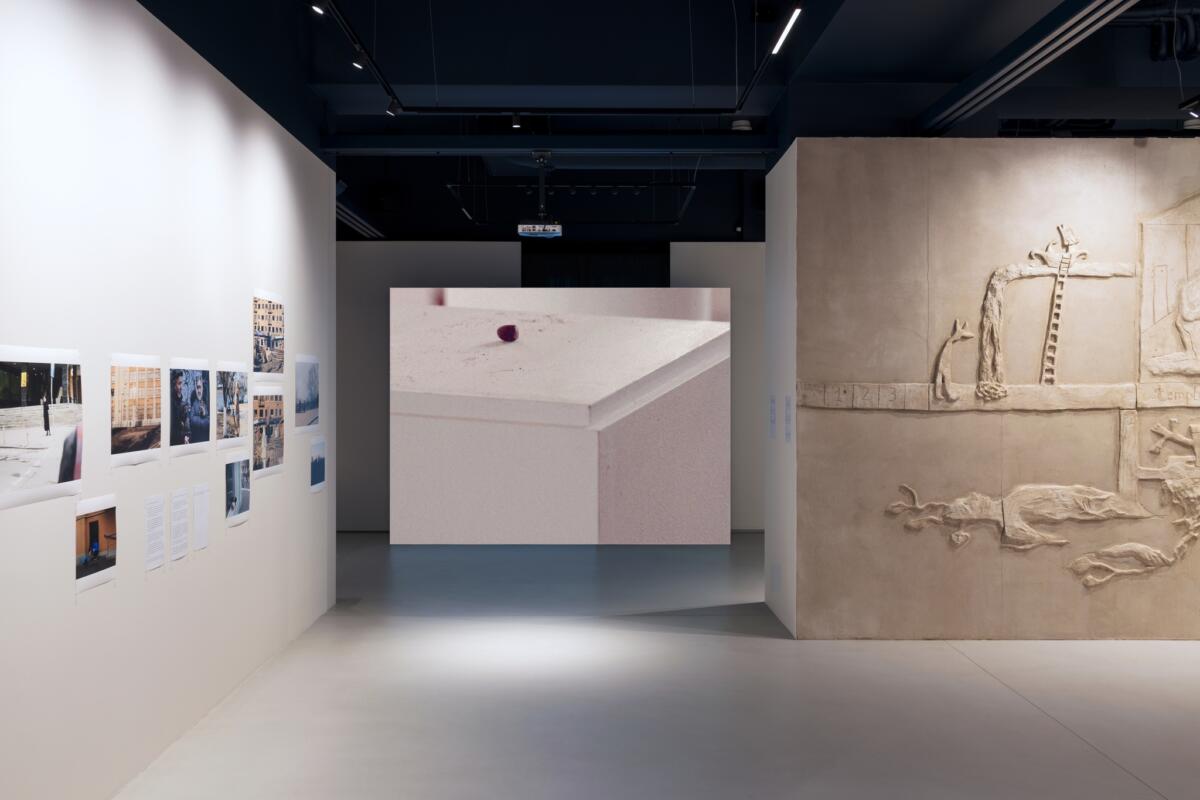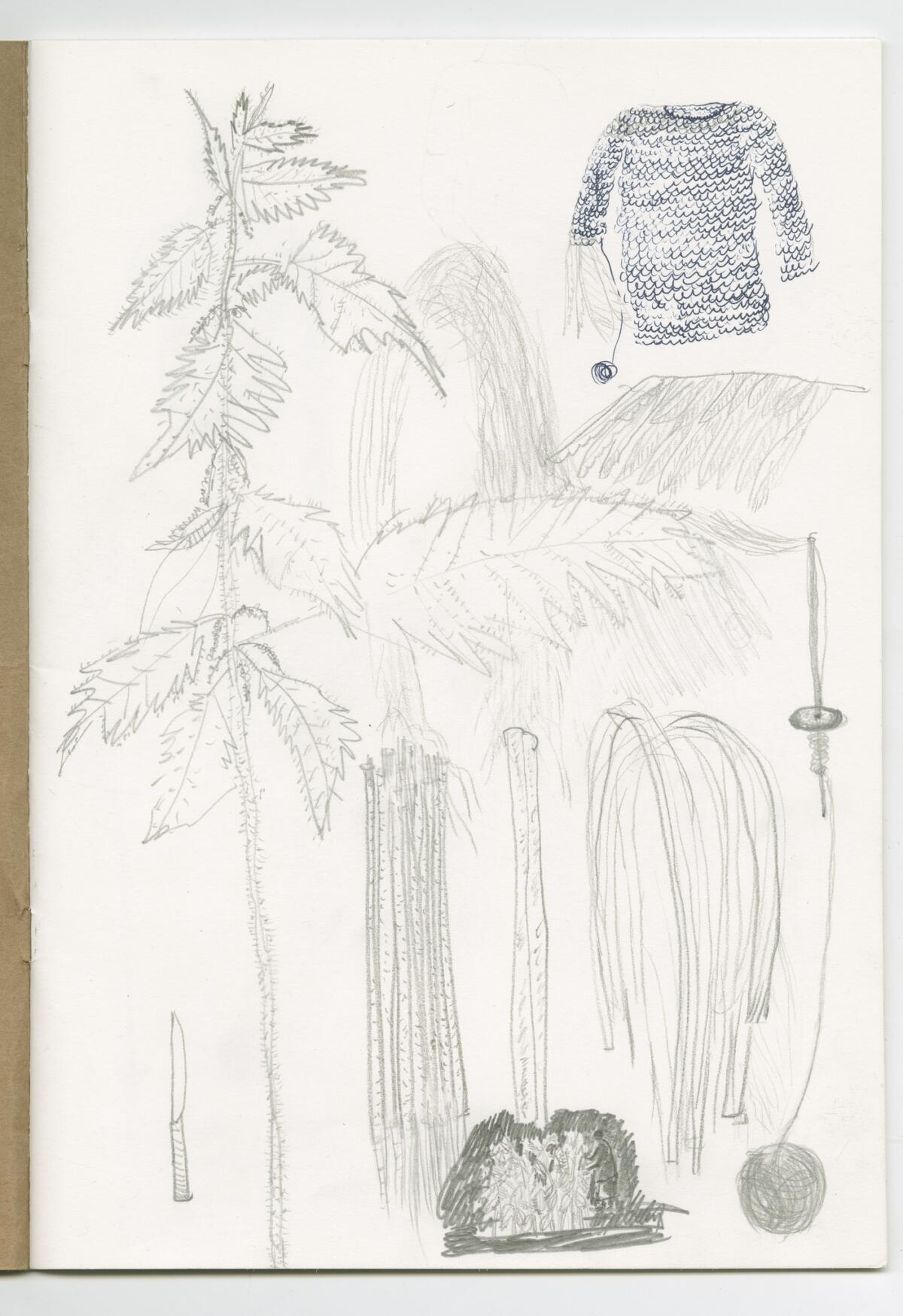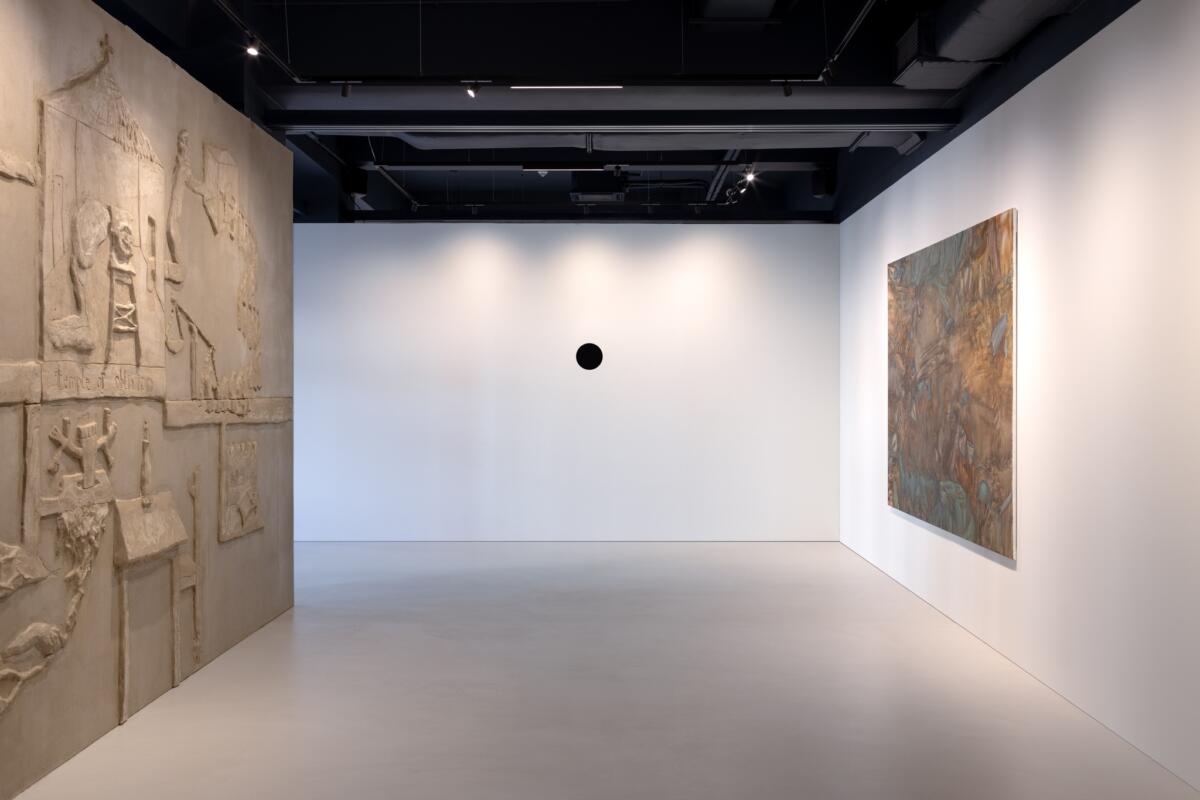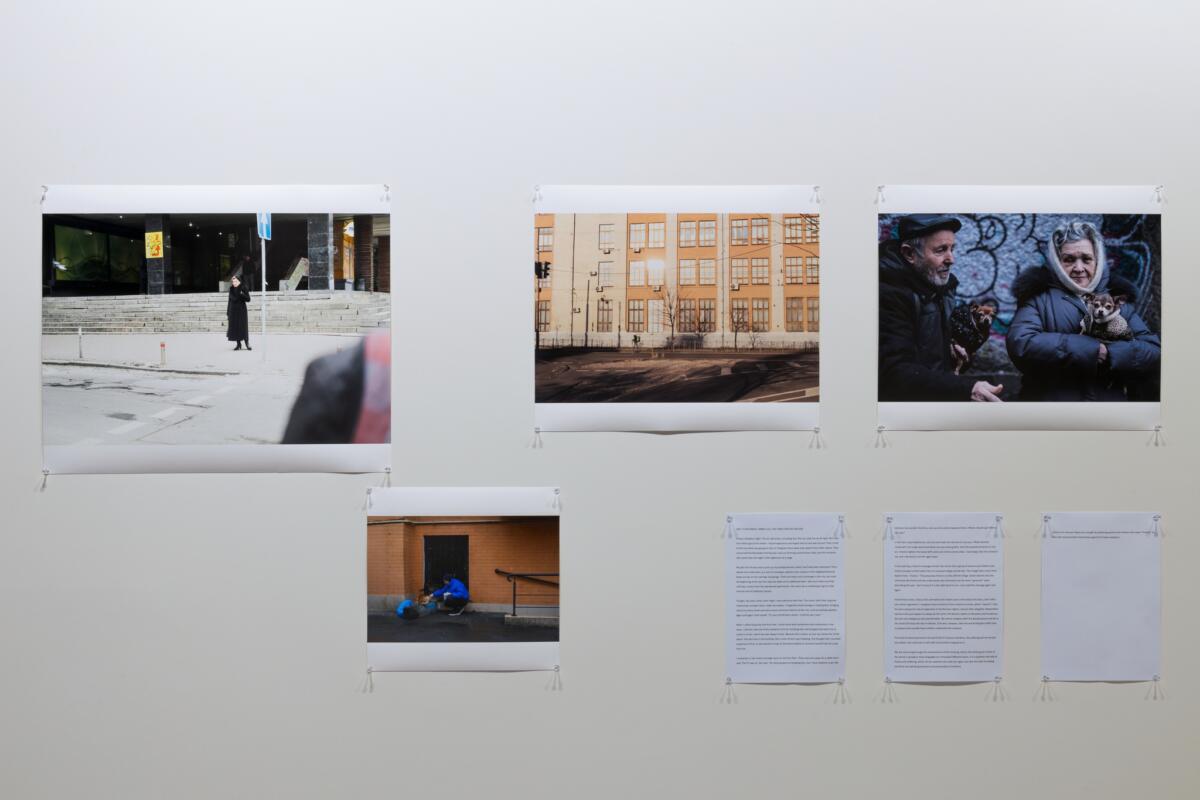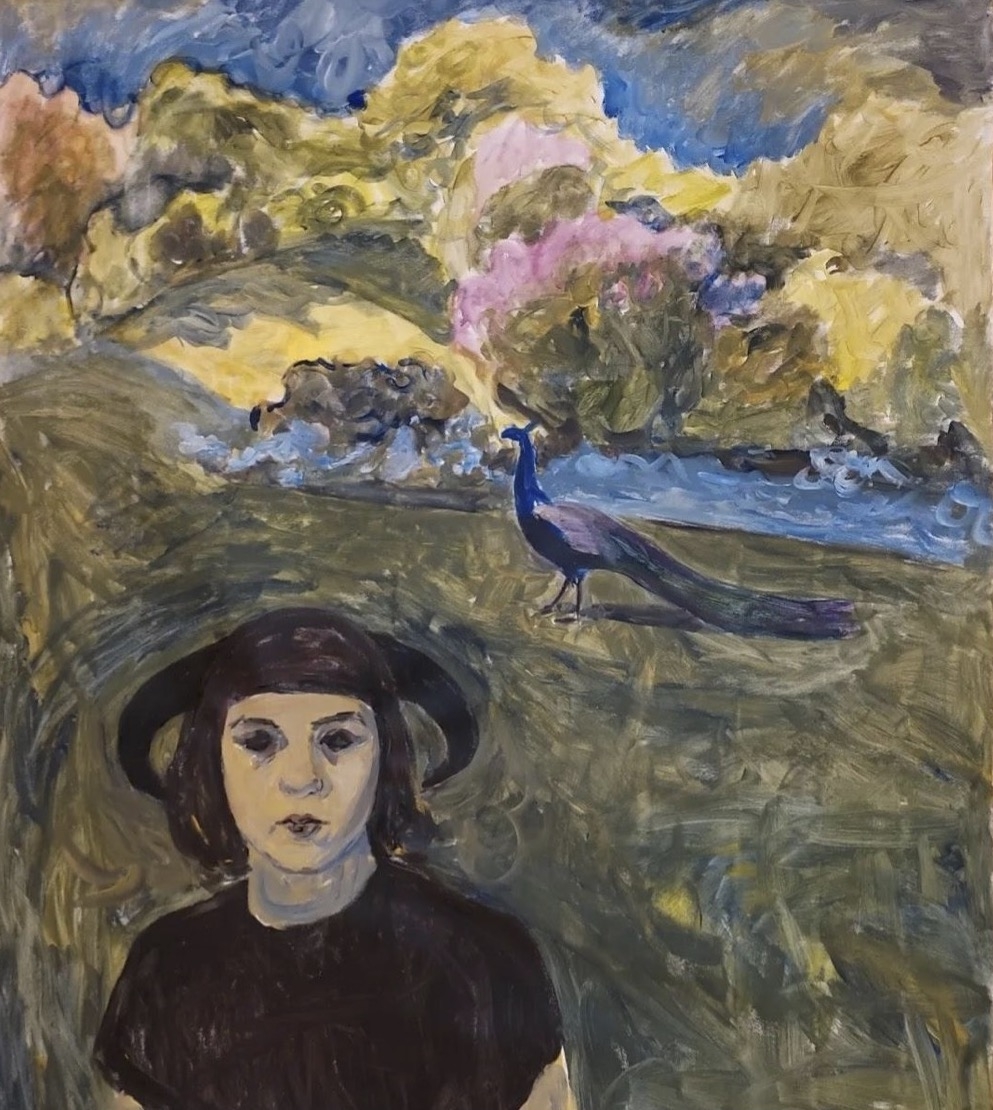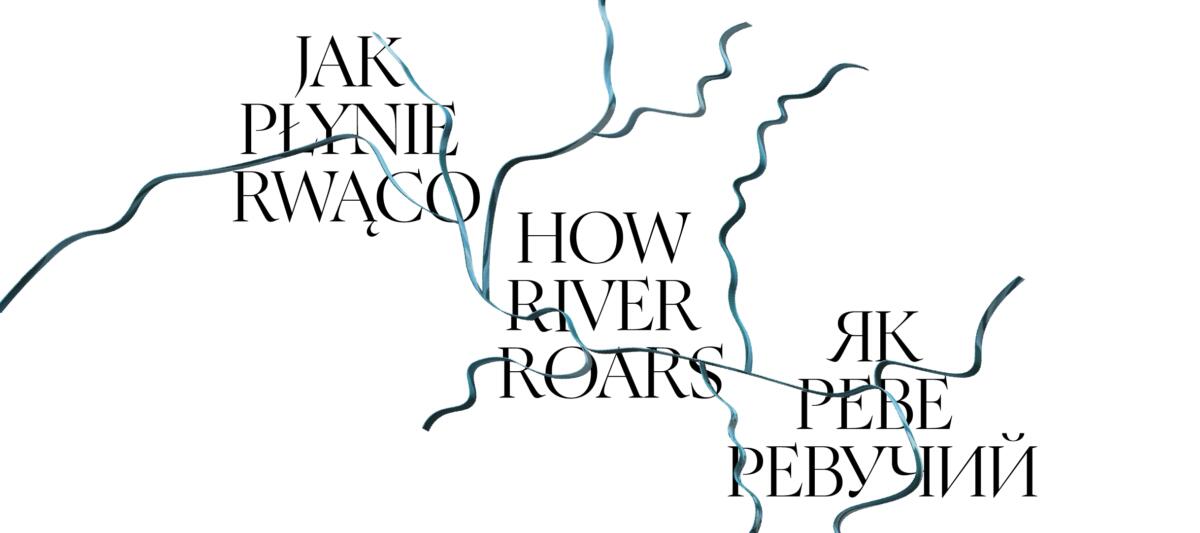
Oleksandra Pogrebnyak: I would like to begin our conversation about the exhibition by revisiting our initial discussion about collaborating on the project at the new institution in Wrocław, the Krupa Art Foundation. This online conversation took place in early January, in the first days of 2023. At that time, we were staying in the Carpathians for an art residency curated by my husband, Dmytro Chepurnyi. He anticipated that the transition from 2022, marked by Russia’s full-scale invasion of Ukraine, to 2023, could be challenging. His prescience proved correct. Both the 31st of December and the 1st of January in our hometown of Kyiv resonated with the echoes of air raids and explosions, as the Ukrainian air-defense countered Russia’s rockets. In this context, these two weeks we spent in the remote mountains with other curators and artists not only symbolized a change in the calendar year and religious holidays (major holidays shift from the Russian-affiliated Julian calendar to the Gregorian calendar), but also brought about significant changes in my personal life, which I’ll touch on later. For now, I would like to take another step back and ask you to say more about your thinking behind this exhibition. Antoni, how did you come to the understanding that you are willing to open the art center with a Ukrainian exhibition? What narratives did you expect to unfold?
Antoni Burzyński: In the winter of 2021-2022, we at the Krupa Art Foundation began discussing the programme for our soon-to-be-opened new space on the main square in Wrocław. One of our institutional focus areas was Central and Eastern Europe. Personally, I was coming off an exhibition I co-curated with Pavlo Kovach in Lviv. So when Russia launched its full-scale invasion, it seemed so natural to work with Ukrainian artists. On a human, political, but also artistic level – there were big changes coming, and art institutions should be involved in them. And on an institutional level, opening a new space with a show of Ukrainian art was also a programmatic statement, an indication of our future direction. As time went by, we have realised that the show we wanted to create should present the artists not only in the context of the war. That’s why, working with Oleksandra, we tried to include other layers in the project. Thanks to this, the overall theme of return, which is obviously related to the war, allowed us to open the way to other areas. On the one hand, we tried to present the artistic practices that seemed to be specific or characteristic of the Ukrainian art scene at the moment, and on the other hand, we wanted to highlight the fact that, on an artistic or philosophical level, these are part of the discussions about changing the world that are now taking place internationally. Very inspiring discussion, radical, in some regards.
OP: The exhibition can be read in various ways, and the opening space itself introduces several narratives that connect the works throughout the exhibition. I would like to begin with the large piece by Dasha Chechushkova. She created the work on the wall of the art center. The relief, made of cement-lime plaster, serves as a map of her personal journey and different rooms of inner tragedy. Dasha leads us through the maze of a never-possible return. The artist is originally from Odesa. Although it is not located on the frontline, the city still suffers from heavy bombardment, especially after Russia’s withdrawal from the Grain Deal. In her words: ‘The places you leave cease to exist. Your return becomes a process of wandering and adapting to spaces of phantoms and memories’. This is not the only work reflecting on return; other artists approach the theme from different angles. In the work of Open Group, people from Mariupol search for their friends and family members through Telegram chats. These real messages, due to their sheer amount, represent the frozen state of waiting for the war to end, for normalcy to return to their lives, and for their missing loved ones to come back. Anna Zvyagintseva, Kateryna Lysovenko, and the artist duo Yarema Malashchuk and Roman Khimei also follow this idea, but delve into potential futures.
AB: Just as the Open Group focuses on commemorating a shared experience that is prevalent in society, Anna Zvyagintseva tells the story on a very personal level. In an attempt to cast a ‘protective spell’ over a loved one who is in the army, the artist has drawn on the legend of the wild swans, as written by Andersen, and started knitting a nettle shirt to ensure his safety. This personal magic practice corresponds to caring for another person. Both this, and her other work in the exhibition – a selection of drawings based on mediated experience of war stories – in a sense present the perspective of a ‘non-passive viewer’. Being away from one’s country, one’s loved ones, creates a feeling of lack of agency that the artist seeks to overcome.
OP: Land and soil tend to be among the leading themes for Ukrainian artists, who explore them using historical, political, ecological or deeply subjective approaches. In his installation Landscape (2022), Anton Saenko uses the space to resonate with the artist’s voice singing verses from Let the Grass Burn in Autumn… by Ukrainian poet Vasyl Stus, a victim of Soviet repression. In this edition of his work, the landscape is embodied in a circular cutout in the wall, revealing a shadowy void behind it. While the words of the poem describe a natural phenomenon, those familiar with the context of 20th-century Ukraine may see an allusion to the restricted nature of individual freedom under the regime. Another perspective on the landscape is present in the large-scale work by Kateryna Aliinyk. In her paintings, she explores different ways of looking at land, whether it’s from the air (as shown at the exhibition), from a human perspective or from the point of view of an underground dwellers. At the same time, Kateryna’s practice in recent years reveals a strong personal connection to the land of the artist and her family. Born in Luhansk, which has been under occupation for more than nine years, she fled the city while her grandparents remained in their family home. They can never speak directly about the political situation and the Russian occupation, but her grandma and grandpa always share stories about their garden and the plants they grow. These stories, which combine the fertility of the chernozem with the loss of home, are portrayed in her works. Aliinyk often captures the overlapping states of the soil, which have coexisted in strange ways during the active phase of the Russian war of aggression. The tragedy of battle is intertwined with the most peaceful and cyclical agricultural routines – the viewer is exposed to the land where landmines, missile debris and human remains forcibly share space with sticks, roots, and crop residues.
AB: Just as the land may by what the war is fought over, it can also be seen from another perspective. The significance of land and nature – both as subjects and as means –seems to be very visible for some Ukrainian artists. In the case of Kateryna Lysovenko, the two are intertwined. While on one level she addresses the subjectivity of non-human beings, she also creates a metaphor for personal freedom and safety. Both Lysovenko and Aliinyk raise the question of nature as a victim of war, which is a brave gesture in time when people are in danger. It is very interesting to see how the ecological and feminist narratives, which are now reshaping the world, are being used in a country which is waging a defensive war and at the same time undergoing a huge transformation.
Another important issue we wanted to explore in this project was the role of the artist and art in a time of war. We have become accustomed to seeing the artist as a free agent, in the sense of being free from (or deprived of) social roles and expectations. Since the existence of the country is at risk, Ukrainian artists have taken on a special role in society, very different from that of many spokespeople for society, representing its experience and amplifying its voice around the world. The immediate example is the diary of Yevgenia Belorusets, which went from a very personal form to an internationally published account of events. In the exhibition we wanted to highlight the role of artists as cultural ambassadors. It is a significant moment when a high-ranking politician like Olaft Scholz quotes a living artist in his speech. From a personal perspective, I also wanted to add one connotation – in the early stages of the invasion, when the West was supporting the Ukrainians, but with many restrictions on the nature and extent of this support, refusing to provide more significant weapons, I couldn’t help but recall Zbigniew Herbert’s Report from a Besieged City. The lines:
allies overseas I know they feel true compassion
they send us flour sacks of comfort lard and good counsel
(…) they deserve our gratitude so we are grateful[1]
echoed in my head as I saw messages of gratitude to Western nations and realised how much was being denied at the same time. In this perspective Belorusets’ diary from the early days in Kyiv seemed even more significant. It is also worth noting that the diary has become a very important medium for many Ukrainian artists, and we have presented just one of many great works of this kind.
OP: In the concept note for the exhibition, we say that ‘…the artists, along with Ukrainian society in general, are now on the move…’ considering the various experiences of fleeing, temporary or permanent displacement, and the loss of home as both a physical and metaphorical place. Ukraine, particularly its eastern and southern regions, is undergoing dramatic and irreversible processes. In addition to demographic changes linked to active military action, there is extensive destruction of infrastructure, which now lies in ruins after numerous artillery attacks. In this context, we are keen to tell individual stories, some of which are part of Yevgenia Belorusets’ war diary. In her texts and photos, Yevgenia carefully captures these small narratives of everyday life, making them visible to an international audience and amplifying the private voices that would otherwise remain hidden. From another perspective, the notion of disappearance is also valuable to us. Overwhelming historic events transform landscapes, as seen in Kateryna Aliinyk’s work, and they transform people’s life paths – which is explored in the works of Anton Saenko, Dasha Chechushkova, Open Group.
AB: The events that followed 24 February have shed light on the role played by artworks and artifacts in the social fabric and official narratives. The immediate popular effort to protect the works, so beautifully captured by Elena Subach, showed how relevant they are (to the general societies, which – let’s face it – doesn’t pay much attention to art on a daily basis). The interesting sidelight to this work is that we’ve had the chance to see some of the works Subach photographed – Johann Pinsel’s sculptures have been moved to Poland and displayed in an impressive exhibition at Wawel. The significance of artifacts and works of art in the construction of national narratives places them on the list of political aims and objectives in the war. Yarema Malashchuk and Roman Khimei have presented them through absence – by recording the empty vitrines, cabinetts and pedestals in the Local Lore Museum in Kherson, shortly after the institution had been looted by Russian forces. By narrating the story of the artifacts being fully restored to the museum, precisely their original locations in the exhibiting spaces, the artists questioned the possibility of copying the old narratives in the new reality. This section of the exhibition closes with a work that was meant to open it, by being placed in the square at the entrance to the Foundation. Checkpoint for the President of Planet Earth by Nikita Kadan is a large-scale public space sculpture that recalls the history of close relations between Ukrainian and Russian artists and the proposed design for a monument to Velimir Khlebnikov created by the renowned Ukrainian artist Vasyl Yermylov. By changing the base of the monument from a minimalist cube to a copy of a real defensive checkpoint set up by the army on the Ukrainian roads, the artist questions international artistic ties, and rewriting, or re-understanding, the history. We hope to bring the work to life in Wrocław’s main square next year.
OP: In closing, I would like to share a piece of my own journey. Shortly after we began working on the exhibition, my husband and I discovered that we were expecting a baby. As the exhibition schedule shifted from spring to early autumn, it became clear that I would be attending the opening of the exhibition with a newborn baby. Traveling to Wrocław with a five-week-old Teo, my son, and my mother initiated some valuable reflections that I would like to make a part of this story. The distances felt much more imposing, drawing parallels with Kateryna Lysovenko’s experience. Soon after the battle for Kyiv started, she needed to leave the country with two young sons and seek shelter in Austria, but found herself alienated there, as in her work ‘Self-portrait in the Old Austrian Garden’ (2022).
I think of Anna Zvyagintseva, who received the news of the beginning of the full-scale war when she was with her daughter in a safe European city, but was consumed with concern for her family and loved ones who stayed in Ukraine. Yevgenia Belorusets’ experience also resonated with me. Staying in Kyiv on and after the 24th of February 2022, it was still difficult for me to believe that this act of open Russian aggression could ever become possible. It is striking and paralyzing to be a direct witness of Russia’s complete disregard for the established borders of our country and its contempt for the norms of international law. At the same time, it made us eager to speak out loud about it. We were anxious but ready to resist. Now, almost two years from that moment, we are ready to reflect and create more complex narratives about our country and our stories. This is what How River Roars is about for me.
AB: We often think of presenting Ukrainian contemporary art as a gesture of support for the country (which, of course, is partly true). But I think we should focus more on what we can learn from Ukrainian art. The pressure on the artistic community makes their discussions more tense, and more likely to come to conclusions or developing answers. The decolonisation-based rethinking of the position of culture has pushed the whole discourse forward in a way that could be very useful also for us in Poland. We also wanted to show that Ukrainian art today is not only dramatic, but also has poetic and delicate sides.
Return to the table of contents and Introduction.
[1] translated by Czesław Miłosz
Imprint
| Artist | Kateryna Aliinyk, Yevgenia Belorusets, Dasha Chechushkova, Open Group (Yuriy Biley, Anton Varga, Pavlo Kovach), Nikita Kadan, Kateryna Lysovenko, Anna Zvyagintseva, Anton Saenko, Elena Subach, Yarema Malashchuk and Roman Khimei |
| Exhibition | Jak płynie rwąco / How River Roars / Як реве ревучий |
| Place / venue | Krupa Art Foundation |
| Curated by | Oleksandra Pogrebnyak, Antoni Burzyński |
| Index | Anna Zvyagintseva Anton Saenko Anton Varga Antoni Burzyński Dasha Chechushkova Elena Subach Kateryna Aliinyk Kateryna Lysovenko Nikita Kadan Oleksandra Pogrebnyak Open Group Open Group (Yuriy Biley Pavlo Kovach) Yarema Malashchuk and Roman Khimei Yevgenia Belorusets |

